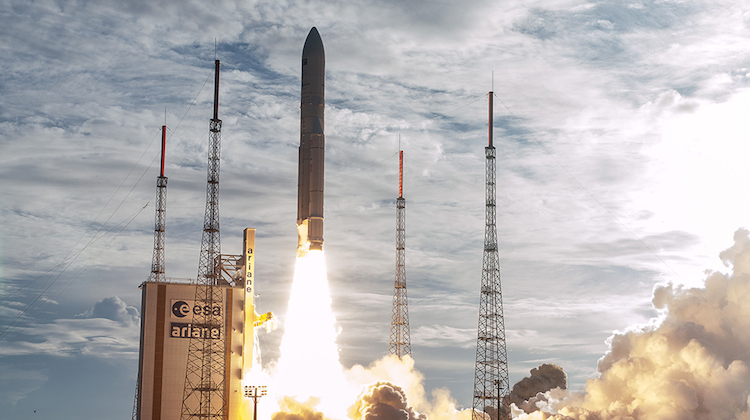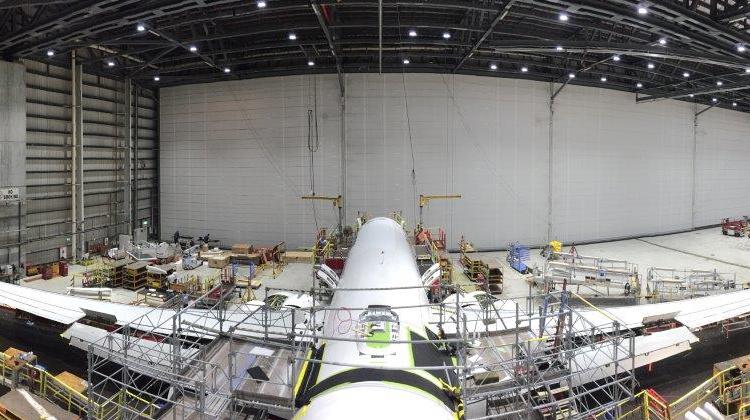
Satellite launch company Arianespace expects the growing demand for internet connectivity to fuel the need to put more satellites into orbit.
Airlines have been quick to install internet facilities on their fleets in recent times, with the likes of Air New Zealand, Qantas and Virgin Australia in this part of the world alone committing to offer inflight wifi in the past year. Moreover, a record number of international carriers flying to Australia already offer the service.
And while the passengers will no doubt enjoy updating their friends on what they are doing at 33,000ft or keeping in touch with the office, Arianespace regional managing director Richard Bowles says the airlines also stand to benefit in a big way with internet connectivity provided via satellite.
This is particularly so with calls for real-time monitoring of an aircraft’s whereabouts coming in the wake of the disappearance of Malaysia Airlines flight MH370 almost three years ago.
“We’ve seen from that terrible disaster the MH370, nobody knew where the plane was,” Bowles tells Australian Aviation in an interview from Singapore, where he is based.
“That has got to be solved by satellites.
“All airlines have got to really bite the bullet and make sure that their aircraft are in constant contact and the only way you are going to do that is with satellites.”
Further, Bowles said airlines would be able to take advantage of satellite connectivity to stay on top of any issues inflight, which would help speed up any maintenance works required once the aircraft was on the ground.
“Most of the data that is going to be coming off the airplanes is for the airlines themselves,” Bowles said.
“For the airlines there is a massive interest in the monitoring of the health of the airplane.”
“By keeping the plane permanently connected via satellite links they know what the fuel burn is, they know what the key parameters of the engine are.”
“Satellites and airlines I think are going to be an absolutely key pair. Airlines will need satellite coverage. There is absolutely no other way to do it.”
Indeed Qantas has talked up the operational benefits of onboard wifi, with its pilots, engineers and ground staff looking forward to using the new technology as part of their day-to-day duties.
In August, Qantas said its flight operations and engineering staff were exploring the untapped potential of on board connectivity across the business, from real-time monitoring of the performance of the aircraft, dealing with irregular operations before passengers walk off the aircraft and providing more weather-related information to pilots enroute.
Qantas and its technology partner Viasat have been conducting trials on board Boeing 737-800, VH-XZB, which was fitted with a satellite antenna, multiple wireless access points in the cabin and other hardware in November.
The wifi system was expected to be turned on for customers early in 2016, Qantas has said previously.

The year 2016 proved a busy one for Arianespace, with the company completing 11 successful launches and signing 13 new launch contracts in the 12 months to December.
One satellite of particular interest for this part of the world was the sending into orbit of Sky Muster II in October.
Sky Muster II joined Sky Muster I in providing high-speed internet to the Australian continent as well as Norfolk, Christmas, Macquarie and Cocos islands for nbn co, the government body charged with rolling out the national broadband network. The satellites were also earmarked for delivering on-board wifi for Qantas.
Arianespace said it planned to conduct 12 launches in 2017.
“Our order book has grown substantially over the last few years. The future of the company couldn’t be rosier quite honestly,” Bowles said.
(Read more about airlines’ plans for inflight wifi in the January/February edition of Australian Aviation, on sale now at newsagents and online.)















